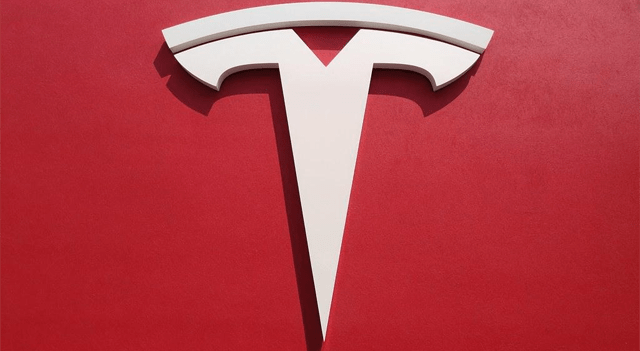U.S. equities closed out last week on a high note, supported by renewed optimism over U.S.–China trade discussions and fading concerns from the regional bank selloff earlier in the week.
The Dow Jones Industrial Average gained 238.37 points, or 0.52%, to end at 46,190.61, while the S&P 500 added 0.53% to finish at 6,664.01. The Nasdaq Composite advanced 0.52% to close at 22,679.98.
Momentum built late in Friday’s session after Treasury Secretary Scott Bessent said he planned to speak with his Chinese counterpart later that day. President Trump also confirmed that a meeting with China’s President Xi Jinping would still take place at the end of the month, easing concerns about a potential 100% tariff on Chinese goods set to take effect November 1.
Despite volatility earlier in the week, the indexes all notched solid weekly gains. The S&P 500 rose 1.7%, lifted by a strong start to Q3 earnings season, while the Dow climbed 1.6% and the Nasdaq gained 2.1%.
Inflation data and corporate earnings in focus
With official government reports paused due to the shutdown, investors will be leaning on earnings reports and executive guidance to assess the state of the economy.
“Reports and what companies say is really our best chance at assessing what the broader economic health is,” said Kevin Gordon, senior investment strategist at Charles Schwab, as reported by Reuters.
The U.S. Bureau of Labor Statistics will release the delayed September CPI report on Friday, just days before the Federal Reserve System’s October 28–29 policy meeting. Investors are pricing in another 25-basis-point cut after last month’s move, which followed weaker labor data.
Tesla and Netflix headline a busy earnings week
Roughly 14% of S&P 500 companies are set to report this week. Beyond profit figures, investors will be watching how companies plan to deploy capital in an uncertain environment.
Goldman Sachs projects that S&P 500 cash spending will increase by 11% in 2026 to around $4 trillion, supported by “above-consensus AI capex growth.” About half of this is expected to go to capex and R&D, 43% to dividends and buybacks, and the rest to M&A.
“The AI hyperscalers now account for 27% of S&P 500 capex, and we expect their capex spending will exceed the consensus forecast of 20% growth next year,” said Goldman strategists led by David Kostin. “These companies have recently been growing capex at a run rate of 75% and they continue to message that supply cannot keep pace with AI demand,” they added.
The Magnificent 7 are expected to deliver 15% earnings growth in Q3, compared to 4% for the rest of the index. Last quarter, the Mag-7 delivered a 27% jump in earnings — nearly twice what analysts forecast — and “we could see something similar again,” strategists at JPMorgan Chase & Co. led by Mislav Matejka said.
Major earnings reports due this week include Tesla, Inc. (NASDAQ:TSLA), Netflix, Inc. (NASDAQ:NFLX), The Coca-Cola Company (NYSE:KO), General Electric Aerospace (NYSE:GE), General Motors (NYSE:GM), IBM (NYSE:IBM), Ford Motor Company (NYSE:F), and Intel Corporation (NASDAQ:INTC).
Analysts’ views on U.S. markets
Morgan Stanley: “Our rolling recovery/early cycle thesis remains intact over the next 6–12 months. That said, we think it’s important to see clearer trade de-escalation from both sides, stability in EPS revisions, and more ample liquidity before declaring the all-clear on the risk of a further near-term correction.”
Evercore ISI: “Volatility in October 2025 will ultimately prove to be an acceleration of the AI Bull market – through earnings strength, an easing Fed, OBBB stimulus and revived capital markets cycle – not the end.”
RBC Capital Markets: “The deterioration in earnings sentiment, which surged from typical non-crisis lows in late April to typical non-crisis recovery peaks in mid-August has been one thing that has kept us on guard for a tier 1 / 5–10% pullback in US equities this fall, along with stretched valuations, weak seasonals, choppy bitcoin trends, weaker US equity flows, recent declines in our sentiment indicator, and jittery investors in our meetings that we’ve worried would be inclined to take profits soon.”
Goldman Sachs: “The backdrop of healthy earnings growth, loose financial conditions, and falling policy uncertainty should support strong cash spending growth next year. The recent outperformance of companies with weak balance sheets is one reflection of the equity market moving to price this friendly backdrop.”
This content is for informational purposes only and does not constitute financial, investment, or other professional advice. It should not be considered a recommendation to buy or sell any securities or financial instruments. All investments involve risk, including the potential loss of principal. Past performance is not indicative of future results. You should conduct your own research and consult with a qualified financial advisor before making any investment decisions.
Some portions of this content may have been generated or assisted by artificial intelligence (AI) tools and been reviewed for accuracy and quality by our editorial team.
